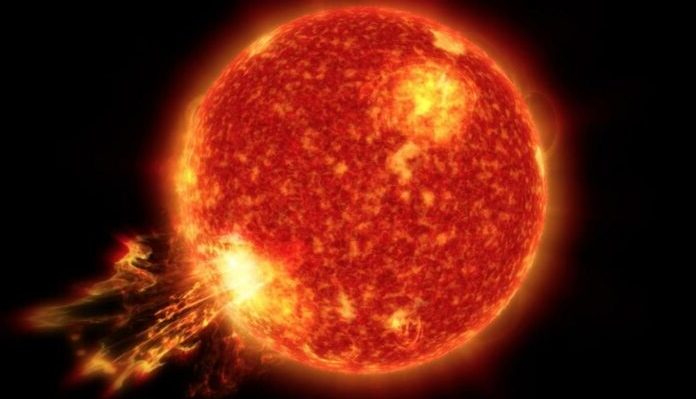Understanding Solar Storms: Types and Impacts on Earth’s Technology
Understanding Solar Storms: Types and Impacts on Earth’s Technology

Solar Storms 101: Types, Impacts, and Precautions
solar storm
A solar storm is a disturbance in the Sun’s atmosphere, which can release a huge amount of energy in the form of radiation and particles. These storms are caused by a phenomenon known as a coronal mass ejection (CME), in which a massive cloud of plasma is ejected from the Sun’s corona, the outermost layer of the Sun’s atmosphere.
When a CME reaches the Earth, it can cause a variety of effects, collectively known as space weather. This can include geomagnetic storms, which can interfere with satellite communications and power grids, as well as auroras, which are beautiful displays of light in the sky caused by charged particles interacting with the Earth’s atmosphere.
While solar storms are a natural phenomenon, they can have significant impacts on modern technology and infrastructure. As a result, there are ongoing efforts to better understand and predict these events, in order to minimize their potential impact.
Solar Storms Impact on earth
Solar storms and their associated effects, collectively known as space weather, can have a range of impacts on the Earth. Some of the most notable impacts include:
Geomagnetic storms: When a CME interacts with the Earth’s magnetic field, it can create a disturbance known as a geomagnetic storm. These storms can cause fluctuations in the Earth’s magnetic field, which can in turn induce electric currents in power grids, pipelines, and other infrastructure. This can lead to power outages, disruptions to communication systems, and other issues.
Radiation exposure: Solar storms can release high levels of radiation, including energetic particles and X-rays. This can pose a risk to astronauts in space, as well as to people in high-altitude aircraft.
Auroras: When charged particles from a solar storm interact with the Earth’s atmosphere, they can create colorful displays of light known as auroras. While these are a beautiful spectacle, they can also interfere with communication systems and other infrastructure.
Satellite disruptions: Solar storms can disrupt the operation of satellites, including GPS and communication satellites. This can lead to interruptions in services such as navigation, television, and internet.
Overall, while solar storms are a natural phenomenon, they can have significant impacts on our modern technology and infrastructure. As a result, it is important to monitor and understand space weather in order to minimize its potential impact.
Types
There are several types of solar storms, each with its own specific characteristics and impacts:
Coronal Mass Ejections (CMEs): CMEs are massive clouds of plasma that are ejected from the Sun’s corona and can travel through space at high speeds. When a CME collides with the Earth’s magnetic field, it can cause a geomagnetic storm.
Solar Flares: Solar flares are sudden, intense bursts of radiation that originate from the Sun’s surface. These can cause radio blackouts and disrupt communication systems.
Solar Wind: Solar wind is a stream of charged particles that flows from the Sun’s corona into space. When these particles interact with the Earth’s magnetic field, they can cause auroras and other effects.
Solar Proton Events: These occur when energetic protons from a solar flare or CME penetrate the Earth’s atmosphere and can pose a radiation risk to astronauts and people in high-altitude aircraft.
Each of these types of solar storms can have different impacts on the Earth’s environment and technology, and it is important to monitor them in order to minimize their potential impact.

One Reply to “Understanding Solar Storms: Types and Impacts on Earth’s Technology”